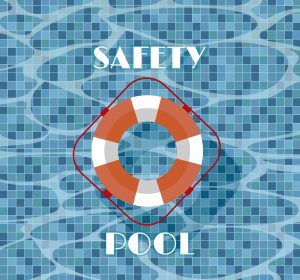 There is a common risk to children in the form of swimming pools. Without proper supervision and safety devices like pool gates, fences, and alarms, children – especially toddlers – are at risk for drowning. In Australia, a coroner / medical examiner recommended that pools, spas, and other water hazards be banned at family day care centers. This recommendation follows the investigation into the death of a toddler – Lachlan Mitchell. The coroner opined that a swimming pool presented an unacceptable drowning risk to children. While the coroner’s recommendation is not being adopted by the local child licensing agency, the recommendation aptly points out the significant risks posted by swimming pools in small day care centers as well as any day care center for that matter. Yes, a swimming pool can be a wonderful activity to small children enrolled in a day care center. Furthermore, teaching small children including toddlers how to swim can be quite beneficial as an essential life and survival skill for children.
There is a common risk to children in the form of swimming pools. Without proper supervision and safety devices like pool gates, fences, and alarms, children – especially toddlers – are at risk for drowning. In Australia, a coroner / medical examiner recommended that pools, spas, and other water hazards be banned at family day care centers. This recommendation follows the investigation into the death of a toddler – Lachlan Mitchell. The coroner opined that a swimming pool presented an unacceptable drowning risk to children. While the coroner’s recommendation is not being adopted by the local child licensing agency, the recommendation aptly points out the significant risks posted by swimming pools in small day care centers as well as any day care center for that matter. Yes, a swimming pool can be a wonderful activity to small children enrolled in a day care center. Furthermore, teaching small children including toddlers how to swim can be quite beneficial as an essential life and survival skill for children.
A ban on swimming pools in day care centers can be seen by the day care operators as a drastic move or a somewhat draconian law. Nevertheless, absent a ban – there will always be some risk by having a swimming pool on premises at a day care center. Adult supervision is key. While gates, locks, and alarms all serve a purpose, there is no substitute for the proper, ongoing, and constant supervision of the children enrolled in the day care center. It is well known that swimming pools are attractive nuisances to children. In other words, children see the pool as a big playground and adventure rather than a danger. Furthermore, children especially infants and toddlers have poor to no safety awareness when it comes to swimming pools and other waterways. In addition to adult supervision, gates should be installed and maintained. In addition, alarms should be put in place to alert day care center staff members when a child is in or near the pool area. Video surveillance would also be helpful in detecting the presence of children in the pool area and in making sure that the children are properly supervised.
According to the United States Center for Disease Control, there is an average of about 3,500 fatal unintentional drowning deaths per year. This is the average for the time period between 2005 and 2014. Children under the age of 14 account for 1 in 5 of these deaths. Furthermore, for every child who drowns – there are statistically 5 more children who are seen in an emergency room for non-fatal drowning related personal injuries.
David Wolf is a child injury attorney who has authored over 4,000 articles and 11 books on the subject of personal injury. He is the author of the book titled The ABCs of Child Injury – Legal Rights of the Injured Child – What Every Parent Should Know which has chapters on Swimming / Aquatic Related Personal Injuries, Day Care Center Injuries, Playground Injuries, and other topics. You can get this book for free at The ABCs of Child Injury.
If a child has been injured as a result of a drowning related incident, it is important to contact a Child Injury Lawyer for advice, guidance, and when appropriate legal representation. Drowning related personal injury cases can be pursued if it can be established through the facts and evidence that there was negligence on the part of a child care provider which, in turn, caused the personal injuries.
 Child Injury Lawyer Blog
Child Injury Lawyer Blog

